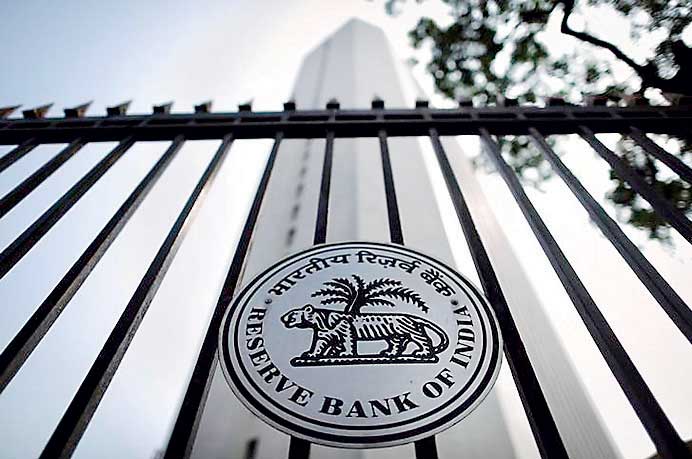Sunday Feb 23, 2025
Sunday Feb 23, 2025
Wednesday, 3 June 2015 00:00 - - {{hitsCtrl.values.hits}}

MUMBAI (Reuters): The Reserve Bank of India (RBI) cut interest rates for a third time this year on Tuesday, taking advantage of subdued inflation to give more support to an economy that many economists doubt is doing as well as latest impressive growth numbers suggest.
The RBI’s quarter point reduction in the repo rate to 7.25% was predicted by 35 of 48 analysts polled by Reuters. Previous cuts, in January and March, had also been by 25 basis points.
The reduction showed policymakers recognised the need to put the economy on a sounder footing, regardless of data released on Friday that showed India outpaced China by growing 7.5% in the March quarter.
“We still have very weak investment. We haven’t seen a strong pick-up,” RBI Governor Raghuram Rajan told a news conference, adding that there were factors to suggest that growth was weaker than the headline numbers made out.
“In general, the corporate results have been quite weak also suggesting that final demand is yet to pick up strongly,” Rajan said.
Many economists, inside and outside the government, suspect a new way used to calculate gross domestic product has overstated how fast India is rising.
Still, the RBI did not take any new steps to free up cash-strapped commercial banks’ liquidity, which bankers had said were needed for them to lower lending rates further and pass on the benefits of monetary easing to the broader economy.
Instead, with growth in bank lending at its lowest in almost two decades, the RBI bank urged banks to reduce rates quickly.
“Meanwhile, banks should pass through the sequence of rate cuts into lending rates,” the RBI said in its statement.
Markets had already discounted the RBI cut. After the move the broader Nifty stood 1.4% down from Monday’s close. India’s benchmark 10-year bonds fell three basis points to 7.85%, and the rupee was little changed at 63.77 per dollar, having ended Monday at 63.72.
Analysts were split about whether the RBI would ease further. A recent Reuters poll had shown most analysts expected another 25 basis points cut between October and December.
The RBI warned it would closely track inflationary trends, citing risks posed to food prices if monsoon rains are weaker than expected, or global crude prices recover, or the rupee weakens due to volatility in global markets.
Consumer price inflation hit a four-month low of 4.87% in April, well within the RBI’s target range of 2 to 6%.
But the central bank also projected inflation would rise to 6% in January 2016, setting up the possibility of no more rate cuts this year.
For now, the rate reduction answered calls from both the government and businesses for the RBI to do more to help growth gather momentum.
Investors are hoping that Prime Minister Narendra Modi’s economic reforms and aggressive spending on infrastructure will take the under achieving economy to another level.
The latest rate reduction showed the RBI’s confidence that that India was in good shape to withstand any market turbulence when the Federal Reserve finally decides to raise interest rates, as it is expected to do later this year.
The RBI cut came just weeks after China made its third interest rate reduction in six months, but growth in India’s giant neighbour has been slowing down.
Having embarked on an easing cycle in January, the RBI’s latest move also completed a reversal of the rate increases ordered by Rajan between September 2013 to January 2014, when India was suffering double-digit inflation.
“I would characterise the policy today as neither conservative nor aggressive. In some sense, it is a Goldilocks policy: just right given the current situation,” Rajan said.
Discover Kapruka, the leading online shopping platform in Sri Lanka, where you can conveniently send Gifts and Flowers to your loved ones for any event including Valentine ’s Day. Explore a wide range of popular Shopping Categories on Kapruka, including Toys, Groceries, Electronics, Birthday Cakes, Fruits, Chocolates, Flower Bouquets, Clothing, Watches, Lingerie, Gift Sets and Jewellery. Also if you’re interested in selling with Kapruka, Partner Central by Kapruka is the best solution to start with. Moreover, through Kapruka Global Shop, you can also enjoy the convenience of purchasing products from renowned platforms like Amazon and eBay and have them delivered to Sri Lanka.
Discover Kapruka, the leading online shopping platform in Sri Lanka, where you can conveniently send Gifts and Flowers to your loved ones for any event including Valentine ’s Day. Explore a wide range of popular Shopping Categories on Kapruka, including Toys, Groceries, Electronics, Birthday Cakes, Fruits, Chocolates, Flower Bouquets, Clothing, Watches, Lingerie, Gift Sets and Jewellery. Also if you’re interested in selling with Kapruka, Partner Central by Kapruka is the best solution to start with. Moreover, through Kapruka Global Shop, you can also enjoy the convenience of purchasing products from renowned platforms like Amazon and eBay and have them delivered to Sri Lanka.